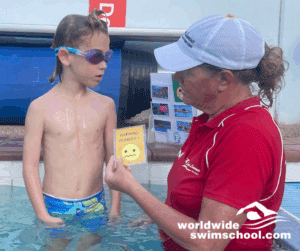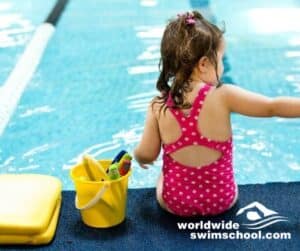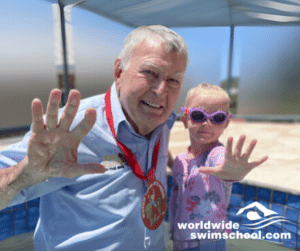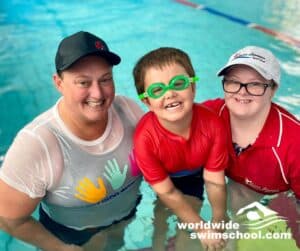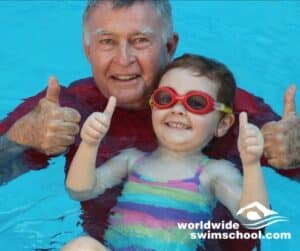World Wide Swim School recommends parental participation in the swimming lesson until the age of 4 years. A good swimming teacher will impart knowledge to the parents in the lesson and use them as an assistant to their teaching where possible. The more knowledge a parent has, the better help they will be to their child and to the teacher within the lesson.
How Parental Participation can Help
There are many reasons that parental participation can help the swimming teacher within the lesson, such as:
- Safety: Parent participation ensures that all swimmers are under strict supervision throughout the lesson. Young children need constant supervision – this can be hard with one teacher and many swimmers. The safety of all swimmers is paramount within any lesson.
- Skill Acquisition: Parental assistance will help swimmers learn, practice and master skills more quickly. With 1 on 1 assistance and support swimmers will have ample time for learning and less time to sit on the side and wait for their turn.
- Maximum Practice: The more a swimmer practices a skill the faster they will learn. With parental participation swimmers are able to practice skills more often, therefore master skills more quickly.
Circling the lane can be an easy way to achieve maximum practice time. Other teaching tools to achieve maximum practice time are wave formation or circuits. Swimmers should be constantly moving throughout the lesson. Time doing nothing is time wasted – we want swimmers to be moving and learning throughout the entire lesson.
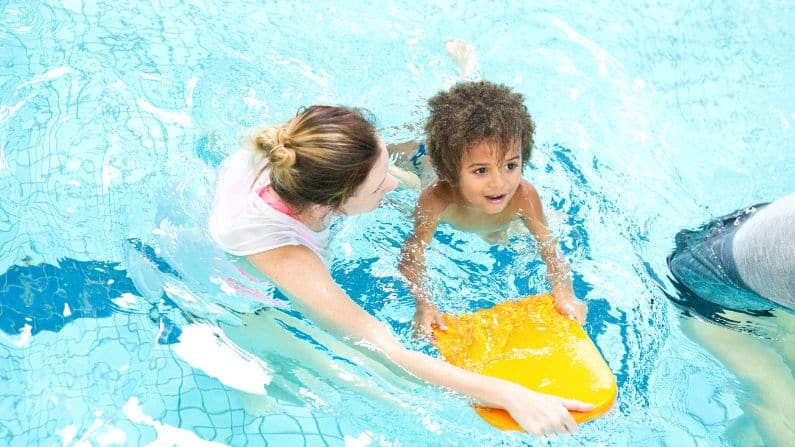
Behaviour Management
Parents are the main disciplinarians for their child. They know what strategies work in managing the behaviour of their own child. Many children don’t respond the same way to the same behaviour management tactics. Parents can assist the swimming teacher in stopping any undesired behaviours with the tactics that they use with their own child at home.
Parents can also support and encourage their own child as well as the rest of the class. Behaviour management is not always a negative tool in teaching – instructors may use positive behaviour management strategies such as Kounin’s Ripple Effect.
Modifying children’s behaviour can also be found in keeping children on task throughout the lesson. This includes moving them over when they reach the end of the lane, keeping them close to the lane rope or hold their attention when receiving instructions.
Swimmers under the age of 4 still need a lot of manipulation. This forms excellent neuromuscular patterns, also knows as muscle memory. If parents are manipulating correctly, they will produce great quality swimmers by the time the child transitions into a Learn to Swim class on their own.
Join our community and keep up to date with new articles, special offers - it is free to join!
Looking for more information on learning how to swim - don't go past the Swim Library.

